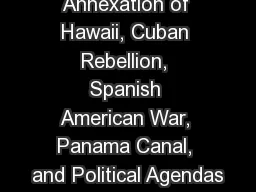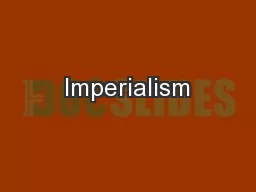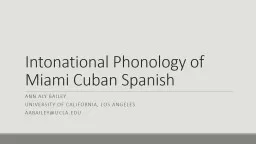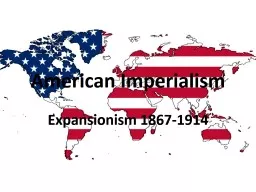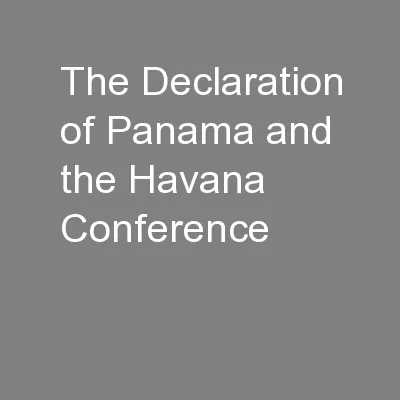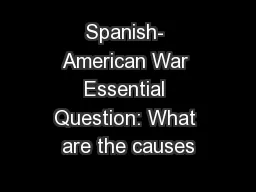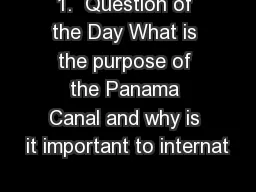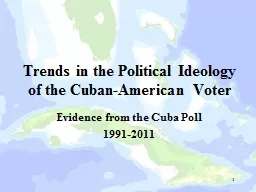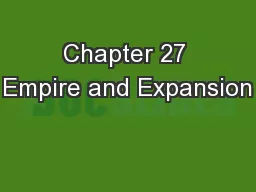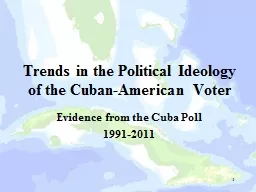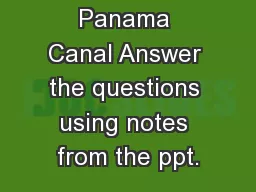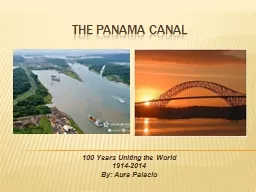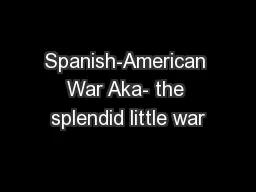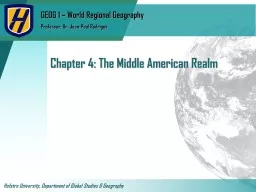PPT-Annexation of Hawaii, Cuban Rebellion, Spanish American War, Panama Canal, and Political
Author : lindy-dunigan | Published Date : 2018-09-18
America Expands Territorial Expansion Alaska Added US buys Alaska from Russia for 72 million Less than 2 cents an acre Got 600000 acres Annexation of Hawaii 1870
Presentation Embed Code
Download Presentation
Download Presentation The PPT/PDF document "Annexation of Hawaii, Cuban Rebellion, S..." is the property of its rightful owner. Permission is granted to download and print the materials on this website for personal, non-commercial use only, and to display it on your personal computer provided you do not modify the materials and that you retain all copyright notices contained in the materials. By downloading content from our website, you accept the terms of this agreement.
Annexation of Hawaii, Cuban Rebellion, Spanish American War, Panama Canal, and Political: Transcript
Download Rules Of Document
"Annexation of Hawaii, Cuban Rebellion, Spanish American War, Panama Canal, and Political"The content belongs to its owner. You may download and print it for personal use, without modification, and keep all copyright notices. By downloading, you agree to these terms.
Related Documents

